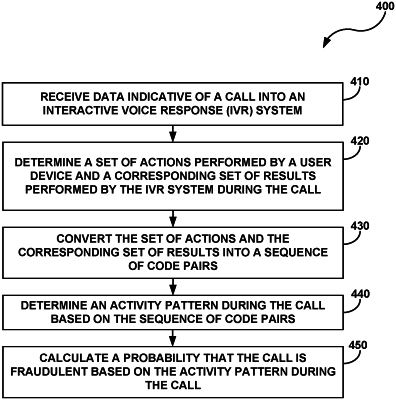| CPC H04M 3/2281 (2013.01) [G06N 3/08 (2013.01); G10L 15/22 (2013.01); H04M 3/5166 (2013.01); G06F 2218/12 (2023.01); G06N 3/04 (2013.01); G10L 2015/223 (2013.01); H04M 2201/40 (2013.01)] | 20 Claims |

|
1. A computing system comprising:
a memory configured to store a deep learning model; and
one or more processors in communication with the memory, the one or more processors configured to:
receive a set of training data comprising a plurality of calls into an interactive voice response (IVR) system, wherein the plurality of calls included in the set of training data includes a group of fraudulent calls and a group of non-fraudulent calls;
identify an activity pattern corresponding to each call of the plurality of calls based on a sequence of code pairs corresponding to each call of the plurality of calls; and
train the deep learning model using the activity pattern corresponding to each call of the plurality of calls,
wherein, during training, the deep learning model is configured to identify, based on the activity pattern corresponding to each call of the plurality of calls, a plurality of patterns associated with the group of fraudulent calls included in the set of training data and a plurality of patterns associated with the group of non-fraudulent calls included in the set of training data.
|